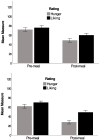Hunger, Satiety, and Their Vulnerabilities
- PMID: 39275328
- PMCID: PMC11397003
- DOI: 10.3390/nu16173013
Hunger, Satiety, and Their Vulnerabilities
Abstract
The psychological states of hunger and satiety play an important role in regulating human food intake. Several lines of evidence suggest that these states rely upon declarative learning and memory processes, which are based primarily in the medial temporal lobes (MTL). The MTL, and particularly the hippocampus, is unusual in that it is especially vulnerable to insult. Consequently, we examine here the impact on hunger and satiety of conditions that: (1) are central to ingestive behaviour and where there is evidence of MTL pathology (i.e., habitual consumption of a Western-style diet, obesity, and anorexia nervosa); and (2) where there is overwhelming evidence of MTL pathology, but where ingestive behaviour is not thought central (i.e., temporal lobe epilepsy and post-traumatic stress disorder). While for some of these conditions the evidence base is currently limited, the general conclusion is that MTL impairment is linked, sometimes strongly, to dysfunctional hunger and satiety. This focus on the MTL, and declarative learning and memory processes, has implications for the development of alternative treatment approaches for the regulation of appetite.
Keywords: appetite; declarative memory; hunger; interoception; medial temporal lobe; remediation; satiety; temporal cues.
Conflict of interest statement
The authors report no conflicts of interest.
Figures


Similar articles
-
[Hunger and satiety factors in the regulation of pleasure associated with feeding behavior].Biol Aujourdhui. 2016;210(4):259-268. doi: 10.1051/jbio/2016025. Epub 2017 Mar 22. Biol Aujourdhui. 2016. PMID: 28327283 French.
-
General versus hunger/satiety-specific interoceptive sensibility in predicting disordered eating.Appetite. 2022 Apr 1;171:105930. doi: 10.1016/j.appet.2022.105930. Epub 2022 Jan 13. Appetite. 2022. PMID: 35033582
-
Hunger and satiety in anorexia and bulimia nervosa.Ann N Y Acad Sci. 1989;575:431-44; discussion 444-5. doi: 10.1111/j.1749-6632.1989.tb53264.x. Ann N Y Acad Sci. 1989. PMID: 2633673 No abstract available.
-
Sensory-specific satiety in anorexia and bulimia nervosa.Ann N Y Acad Sci. 1989;575:387-98. doi: 10.1111/j.1749-6632.1989.tb53259.x. Ann N Y Acad Sci. 1989. PMID: 2699200 Review. No abstract available.
-
The psychological basis of hunger and its dysfunctions.Nutr Rev. 2024 Oct 1;82(10):1444-1454. doi: 10.1093/nutrit/nuad092. Nutr Rev. 2024. PMID: 37495211 Review.
References
Publication types
MeSH terms
Grants and funding
LinkOut - more resources
Full Text Sources

